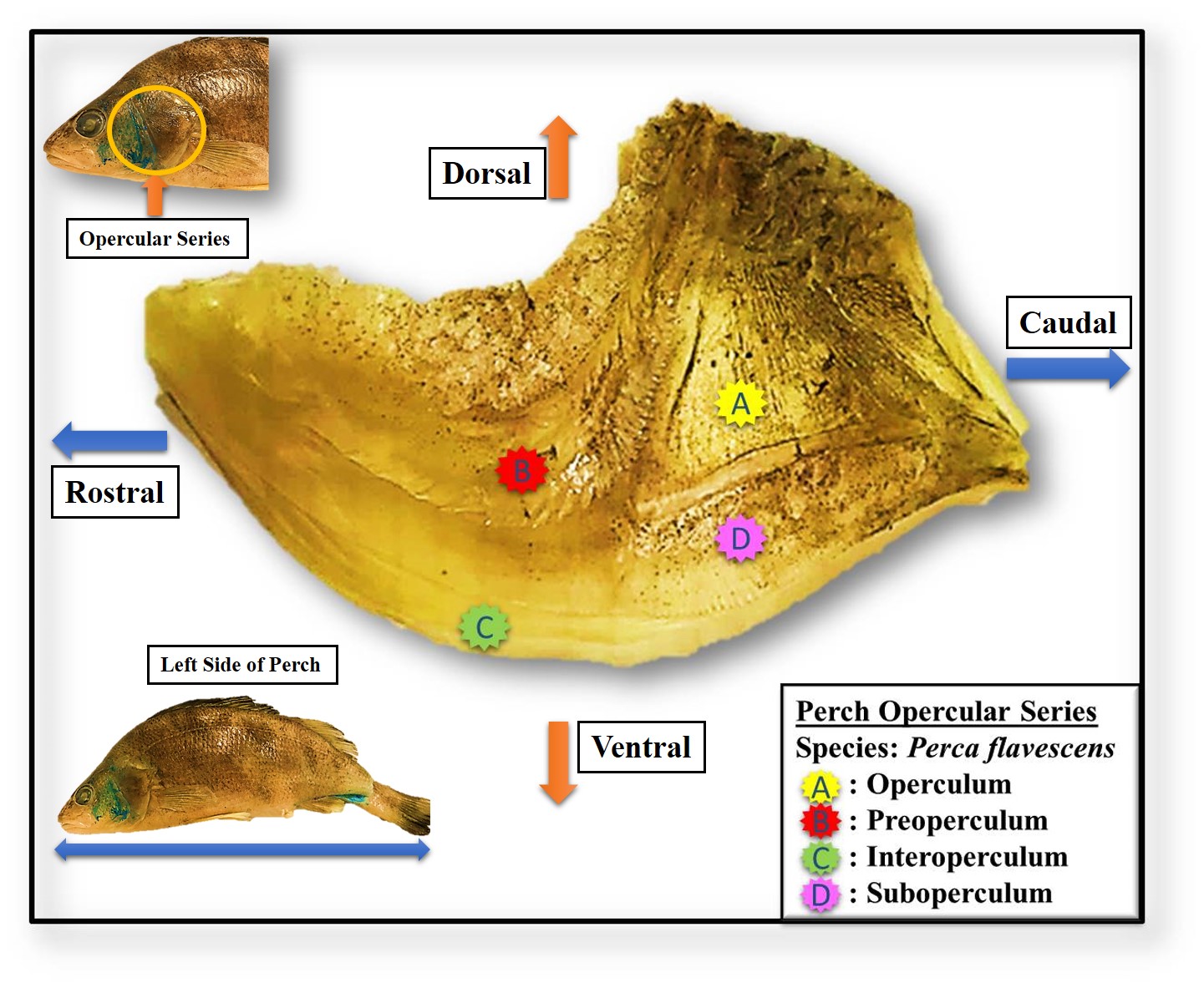operculum (fish) on:
[Wikipedia]
[Google]
[Amazon]
 The operculum is a series of bones found in
The operculum is a series of bones found in
 During development the opercular series is known to be one of the first bone structures to form. In the
During development the opercular series is known to be one of the first bone structures to form. In the
 The operculum is a series of bones found in
The operculum is a series of bones found in bony fish
Osteichthyes (), popularly referred to as the bony fish, is a diverse superclass of fish that have skeletons primarily composed of bone tissue. They can be contrasted with the Chondrichthyes, which have skeletons primarily composed of cartilag ...
and chimaeras
Chimaeras are cartilaginous fish in the order Chimaeriformes , known informally as ghost sharks, rat fish, spookfish, or rabbit fish; the last three names are not to be confused with rattails, Opisthoproctidae, or Siganidae, respectively.
At o ...
that serves as a facial support structure and a protective covering for the gill
A gill () is a respiratory organ that many aquatic organisms use to extract dissolved oxygen from water and to excrete carbon dioxide. The gills of some species, such as hermit crabs, have adapted to allow respiration on land provided they are ...
s; it is also used for respiration and feeding.
Anatomy
The opercular series contains four bone segments known as the preoperculum, suboperculum, interoperculum and operculum. The preoperculum is a crescent-shaped structure that has a series of ridges directed posterodorsally to the organisms canal pores. The preoperculum can be located through an exposed condyle that is present immediately under its ventral margin; it also borders the operculum, suboperculum, and interoperculum posteriorly. The suboperculum is rectangular in shape in most bony fishy and is located ventral to the preoperculum and operculum components. It is the thinnest bone segment out of the opercular series and is located directly above the gills. The interoperculum is triangular shaped and borders the suboperculum posterodorsally and the preoperculum anterodorsally. This bone is also known to be short on the dorsal and ventral surrounding borders.Developmental
 During development the opercular series is known to be one of the first bone structures to form. In the
During development the opercular series is known to be one of the first bone structures to form. In the three-spined stickleback
The three-spined stickleback (''Gasterosteus aculeatus'') is a fish native to most inland and coastal waters north of 30°N. It has long been a subject of scientific study for many reasons. It shows great morphological variation throughout its ra ...
the opercular series is seen forming at around seven days after fertilization. Within hours the formation of the shape is visible and then the individual components are developed days later. The size and shape of the operculum bone is dependent on the organism's location. For example, fresh water threespine sticklebacks form a less dense and smaller opercular series in relation to marine threespine sticklebacks. The marine threespine stickleback exhibits a larger and thicker opercular series. This provides evidence that there was an evolutionary change in the operculum bone. The thicker and more dense bone may have been favored due to selective pressures exerted from the threespine stickleback's environment. The development of the operculuar series has changed dramatically over time. The fossil record of the threespine stickleback provide the ancestral shapes of the operculum bone. Overall, the operculum bone became more triangular in shape and thicker in size over time.
Genes that are essential in the development of the opercular series include the ''Eda'' and ''Pitx1'' genes. These genes are known to be a part of the development and loss of armor plates in gnathostomes. The Endothelin1 pathway is thought to be associated with the development of the operculum bone since it regulates dorsal-ventral patterning of the hyomandibular region. Mutations in the Edn1-pathway in zebrafish
The zebrafish (''Danio rerio'') is a freshwater fish belonging to the minnow family ( Cyprinidae) of the order Cypriniformes. Native to South Asia, it is a popular aquarium fish, frequently sold under the trade name zebra danio (and thus often ...
are known to lead to deformities of the opercular series' shape and size.
The opercular series is vital in obtaining oxygen. They open as the mouth closes, causing the pressure inside the fish to drop. Water then flows towards the lower pressure across the fish's gill lamellae, allowing some oxygen to be absorbed from the water. Cartilaginous ratfishes
Chimaeras are cartilaginous fish in the order Chimaeriformes , known informally as ghost sharks, rat fish, spookfish, or rabbit fish; the last three names are not to be confused with rattails, Opisthoproctidae, or Siganidae, respectively.
...
(chimaeras) possess soft and flexible opercular flaps. Sharks, rays and relatives among elasmobranch
Elasmobranchii () is a subclass of Chondrichthyes or cartilaginous fish, including sharks (superorder Selachii), rays, skates, and sawfish (superorder Batoidea). Members of this subclass are characterised by having five to seven pairs of gil ...
fishes lack the opercular series. They instead respire through a series of gill slits that perforate the body wall. Without the operculum bone, other methods of getting water to the gills are required, such as ram ventilation
Ventilation may refer to:
* Ventilation (physiology), the movement of air between the environment and the lungs via inhalation and exhalation
** Mechanical ventilation, in medicine, using artificial methods to assist breathing
*** Ventilator, a m ...
, as used by many sharks.
See also
*Hyomandibula
The hyomandibula, commonly referred to as hyomandibular one( la, os hyomandibulare, from el, hyoeides, "upsilon-shaped" (υ), and Latin: mandibula, "jawbone") is a set of bones that is found in the hyoid region in most fishes. It usually plays ...
References